Togo Flag Meaning
Five horizontal stripes alternating green and yellow with a blue canton containing a white five-pointed star, representing the country's forests and agriculture, mineral wealth, the blood shed for independence, hope and purity, and the unity of the Togolese people under one star.
- Continent
- Africa
- Adopted
- 1960
- Ratio
- 3:5
- Colors
- green, yellow, red, white, blue
- Designer
- Paul Ahyi
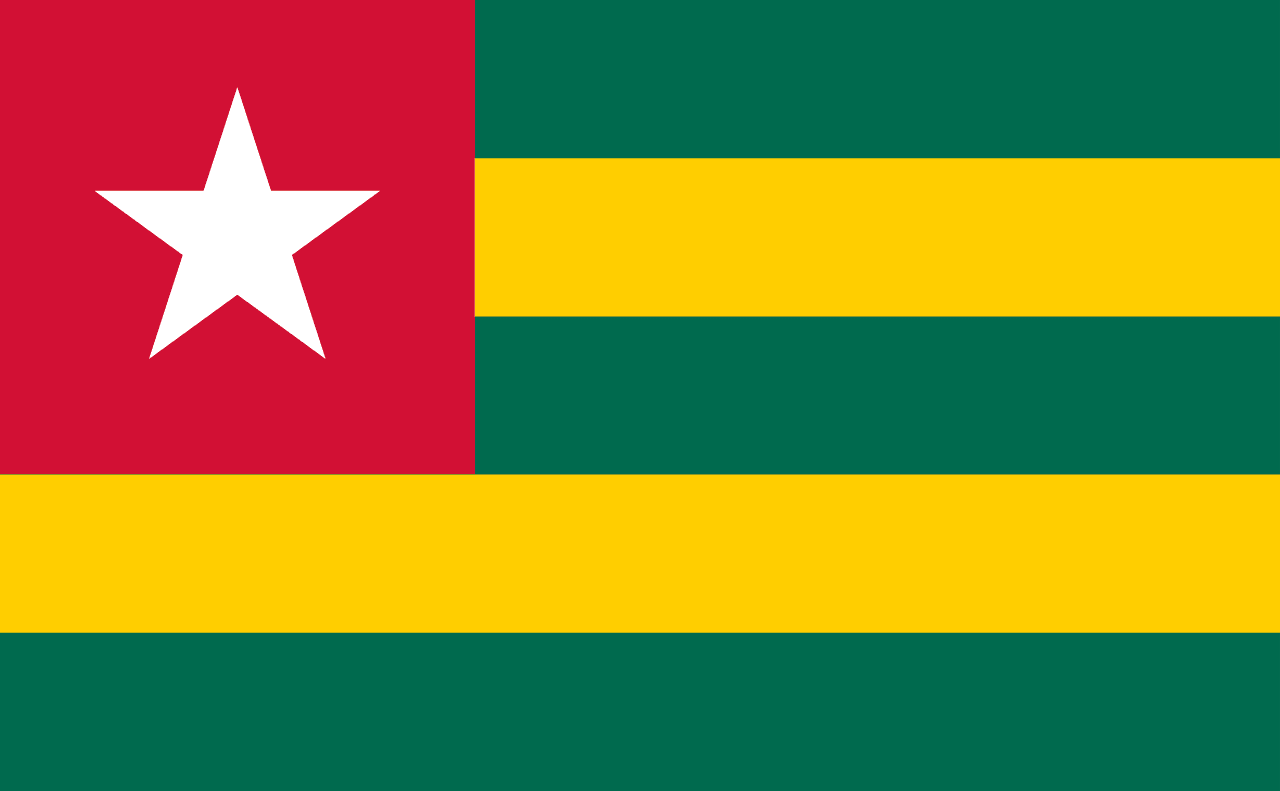
Symbolism
Green Stripes: Represent the forests, agriculture, and hope for the future, symbolizing Togo's natural vegetation, farming that sustains the population, and the environmental wealth of the nation.
Yellow Stripes: Represent the country's mineral wealth, particularly phosphate mining, and the golden sunshine that blesses Togo, symbolizing the economic potential and prosperity of the nation.
Blue Canton: Represents wisdom, hope, and loyalty, symbolizing the sky above Togo and the wisdom needed to guide the nation toward unity and development.
White Star: Represents the purity of aspirations and the unity of the Togolese people under one nation, symbolizing hope for peace and the light that guides the country toward progress.
Pan-African Colors: The flag incorporates Pan-African colors (green, yellow, red) that connect Togo to the broader African independence movement and express solidarity with African unity.
History
- Pre-Colonial Era: Various ethnic groups including the Ewe, Mina, and Kabye inhabited the region, developing trade networks and traditional kingdoms while maintaining distinct cultural identities and languages.
- 1884-1914: Germany established the colony of Togoland, introducing plantation agriculture, railways, and administrative systems while exploiting local labor and resources.
- 1914-1960: After Germany's defeat in World War I, the territory was divided between British and French mandates, with French Togoland becoming modern Togo.
- 1956-1958: British Togoland voted to join Ghana, while French Togoland moved toward independence under the leadership of Sylvanus Olympio and his party.
- April 27, 1960: Togo gained independence from France under President Sylvanus Olympio, adopting the current flag and establishing a multi-party democratic system.
- January 13, 1963: President Olympio was assassinated in Africa's first post-independence military coup, beginning a period of political instability and authoritarian rule.
- 1967-2005: Gnassingbé Eyadéma seized power and ruled for 38 years as one of Africa's longest-serving dictators, suppressing opposition while maintaining French support.
- February 5, 2005: Eyadéma died, and his son Faure Gnassingbé assumed power in what was effectively a dynastic succession, though international pressure forced elections.
- 2005-Present: Faure Gnassingbé has remained in power through contested elections, making gradual democratic reforms while facing ongoing opposition protests and international criticism.
Trivia
- Togo is one of the narrowest countries in the world, stretching only 115 kilometers at its widest point but extending 579 kilometers from north to south, creating a distinctive elongated shape.
- The flag represents one of the world's largest phosphate producers, with mining being a major economic activity, though most Togolese remain dependent on subsistence agriculture.
- Togo has over 40 different ethnic groups speaking various languages, with French as the official language and Ewe and Kabye being the most widely spoken indigenous languages.
- The country is known for its vibrant traditional music and dance, including the energetic kagan dance and drumming traditions that vary among different ethnic groups.
- Lomé, the capital, is home to one of West Africa's largest markets (Grand Marché), where traders from across the region come to buy and sell goods.
- Traditional Togolese religion includes vodun (voodoo) practices that have influenced cultures across the Atlantic through the slave trade, though Christianity and Islam are also widely practiced.
- The flag flies over a country where about 50% of the population is under 18 years old, creating both opportunities for growth and challenges for education and employment.
- Togo's economy is heavily dependent on agriculture, with crops like cocoa, coffee, cotton, and yams being important both for subsistence and export.
- The country has a short but important coastline of only 56 kilometers along the Gulf of Guinea, with the port of Lomé serving as a regional hub for landlocked neighbors.
- Traditional architecture includes distinctive clay houses with thatched roofs in rural areas, while urban areas feature colonial-era buildings and modern structures.
- Togolese cuisine features dishes like fufu (pounded yam), akassa (corn-based dish), and various stews with fish, meat, and vegetables, reflecting both local and coastal influences.
- The flag represents a country where football (soccer) is the most popular sport, with the national team known as 'Les Éperviers' (The Sparrowhawks) competing internationally.
- Despite its small size, Togo has significant cultural diversity with different regions having distinct traditions, languages, and religious practices.
- The country faces development challenges including poverty, limited infrastructure, political tensions, and dependence on foreign aid and remittances from the diaspora.
- Togo plays an active role in West African regional organizations and has contributed peacekeeping forces to various conflicts across Africa.
Related Countries
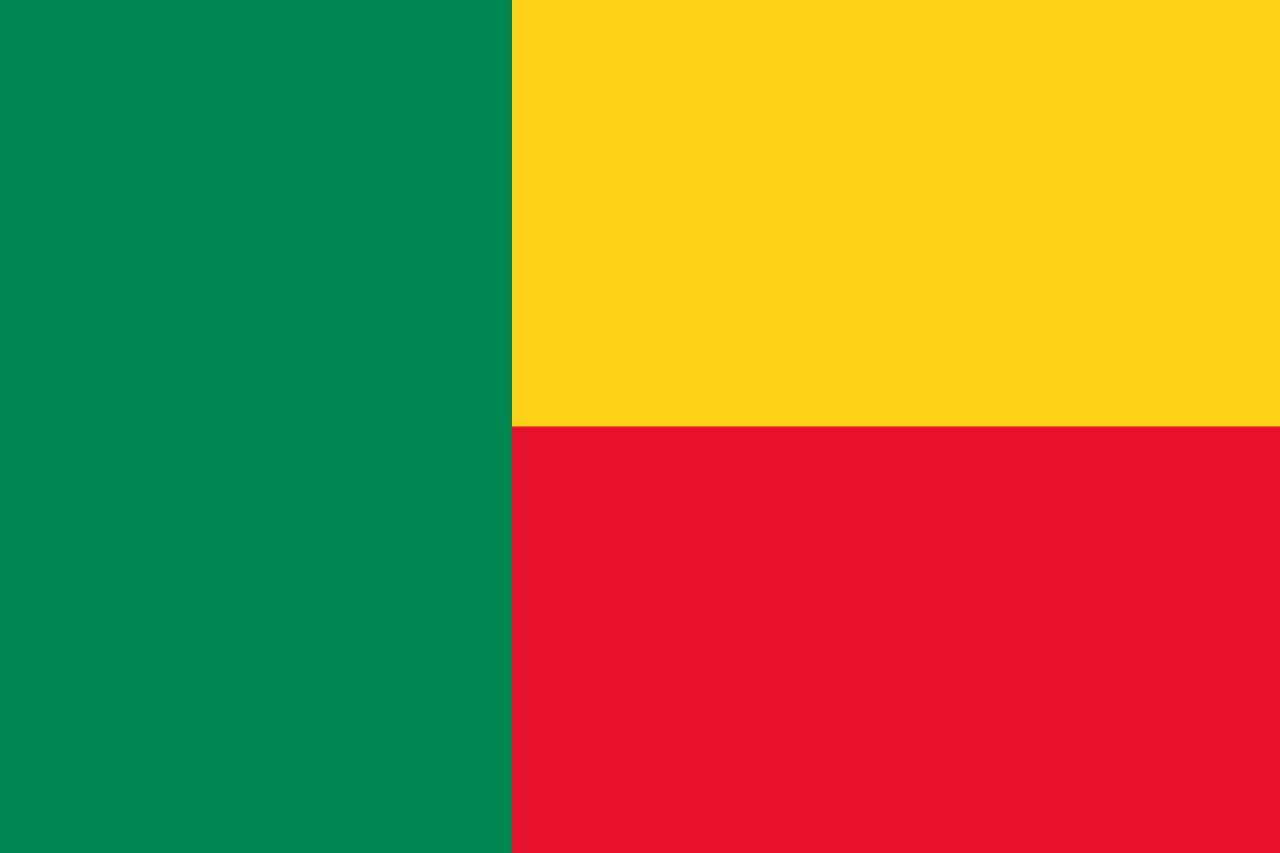
Benin
Africa
A vertical green stripe on the hoist side with horizontal yellow and red stripes on the fly side, representing the forests and hope of the nation, the savannah and mineral wealth, and the courage and blood of the ancestors, using the Pan-African colors that symbolize African unity and liberation.
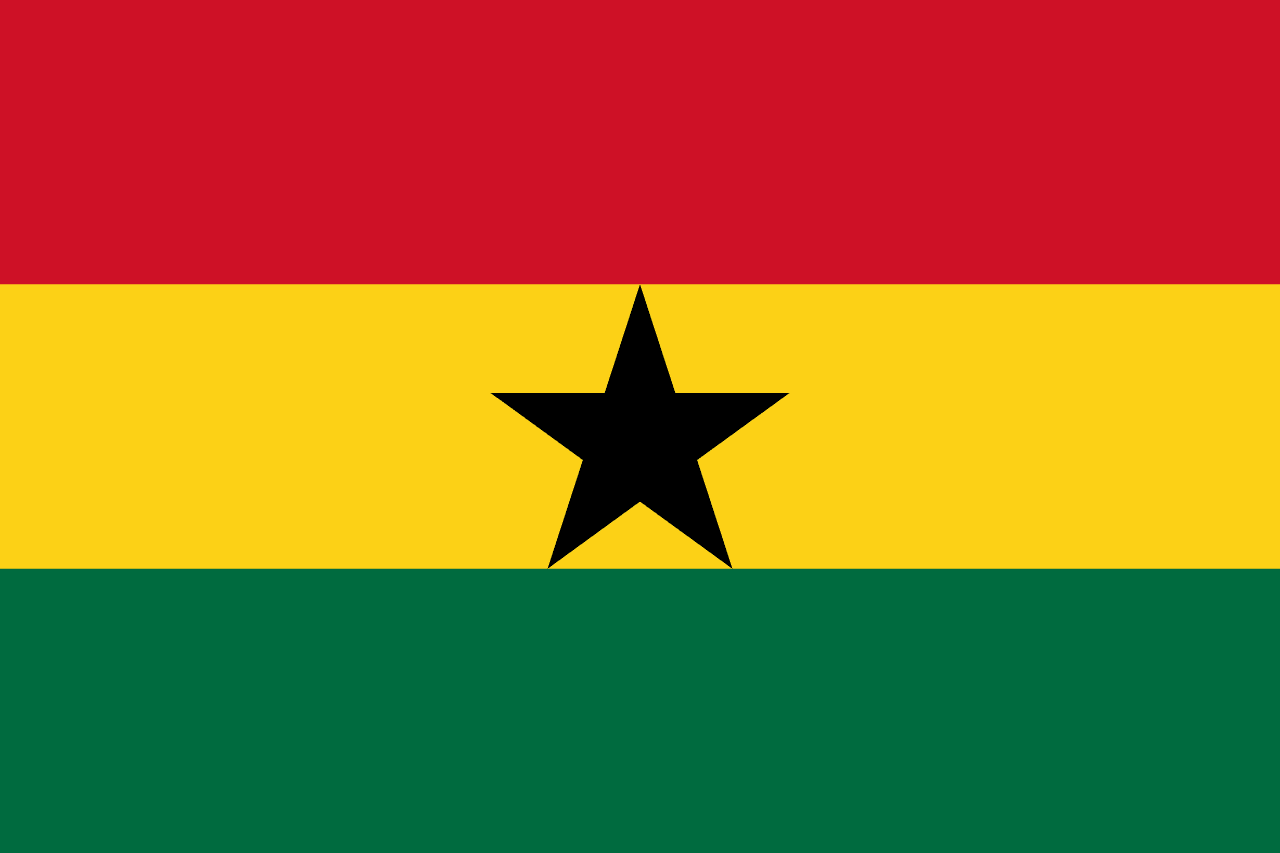
Ghana
Africa
The flag of Ghana and its meaning.
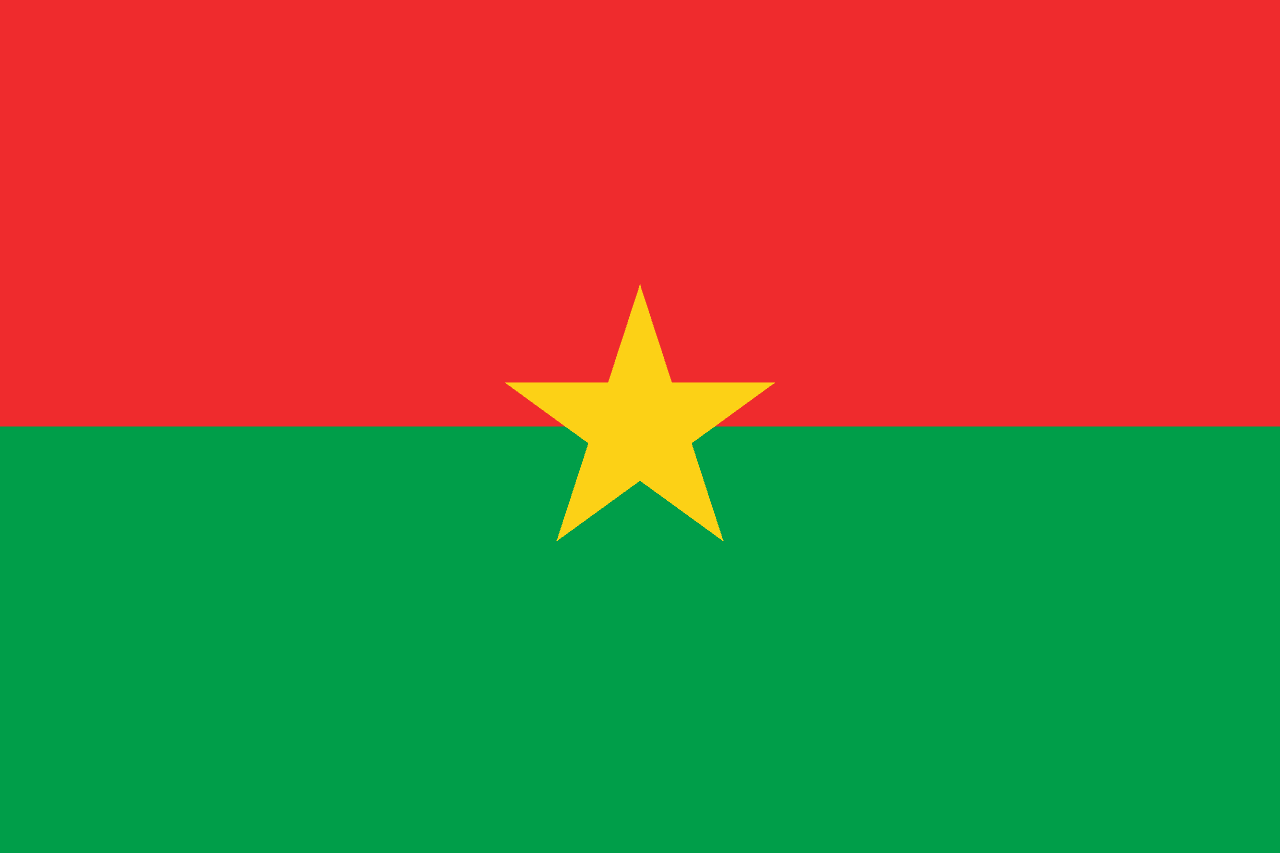
Burkina Faso
Africa
Two horizontal bands of red and green with a yellow five-pointed star in the center, representing the revolutionary ideals, agricultural wealth, and mineral resources of the nation, adopted when the country changed its name from Upper Volta.
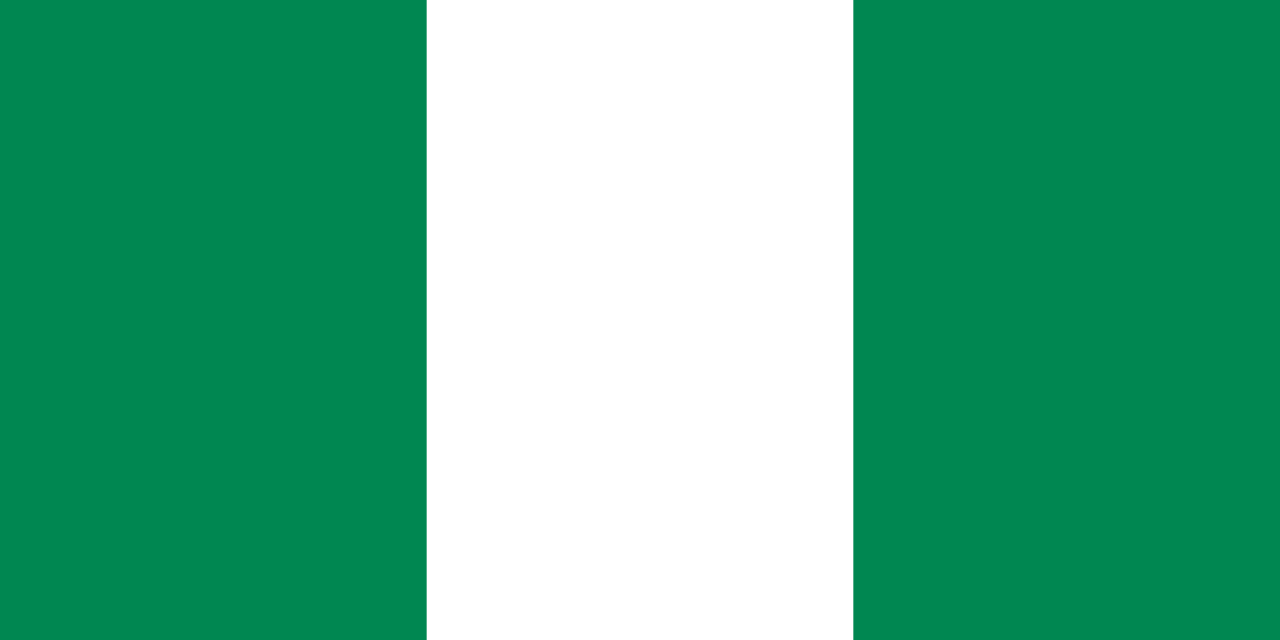
Nigeria
Africa
A vertical tricolor of green, white, and green. The flag was adopted at independence in 1960 and represents agriculture, unity, and peace.
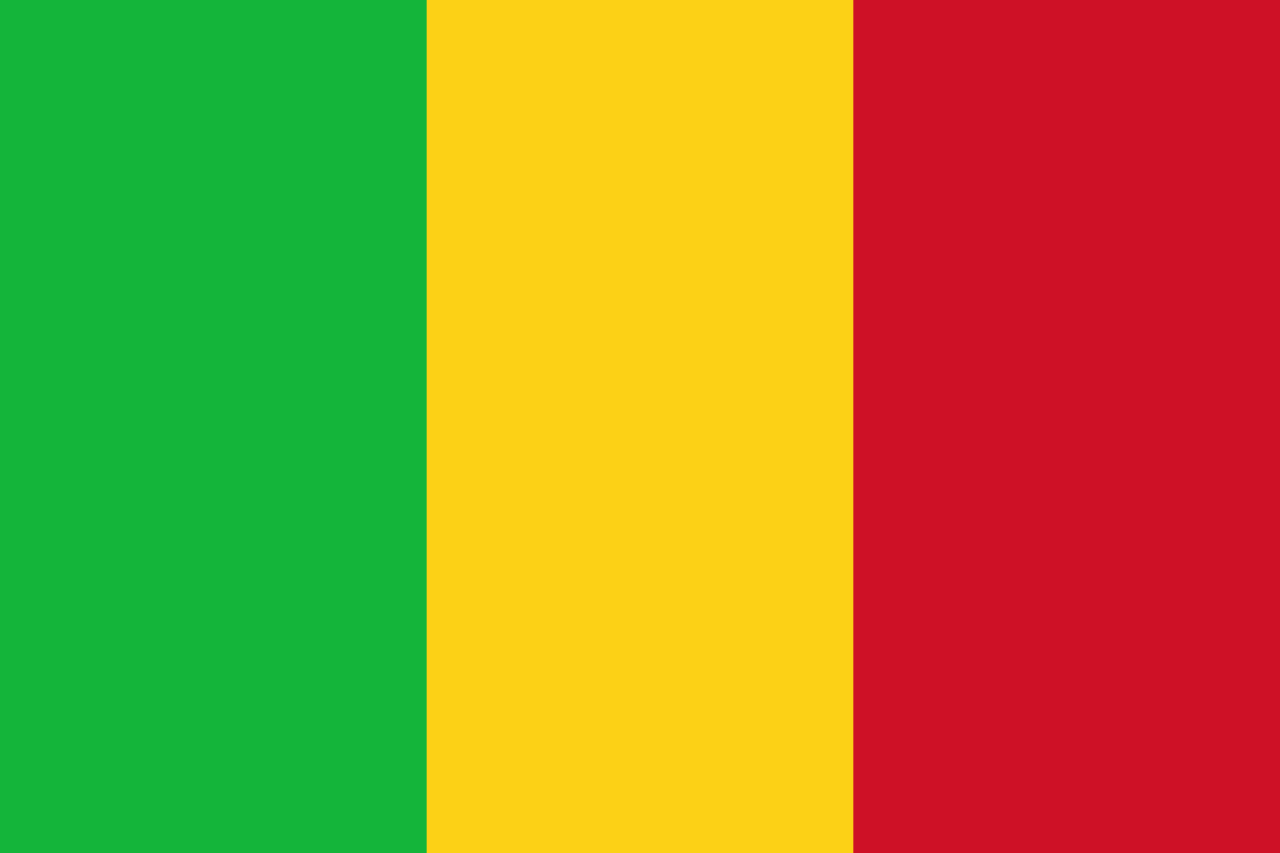
Mali
Africa
Three vertical stripes of green, yellow, and red representing Mali's agricultural potential, mineral wealth, and the blood of independence fighters, connecting modern Mali to both Pan-African ideals and its legacy as home to medieval Africa's greatest empires.
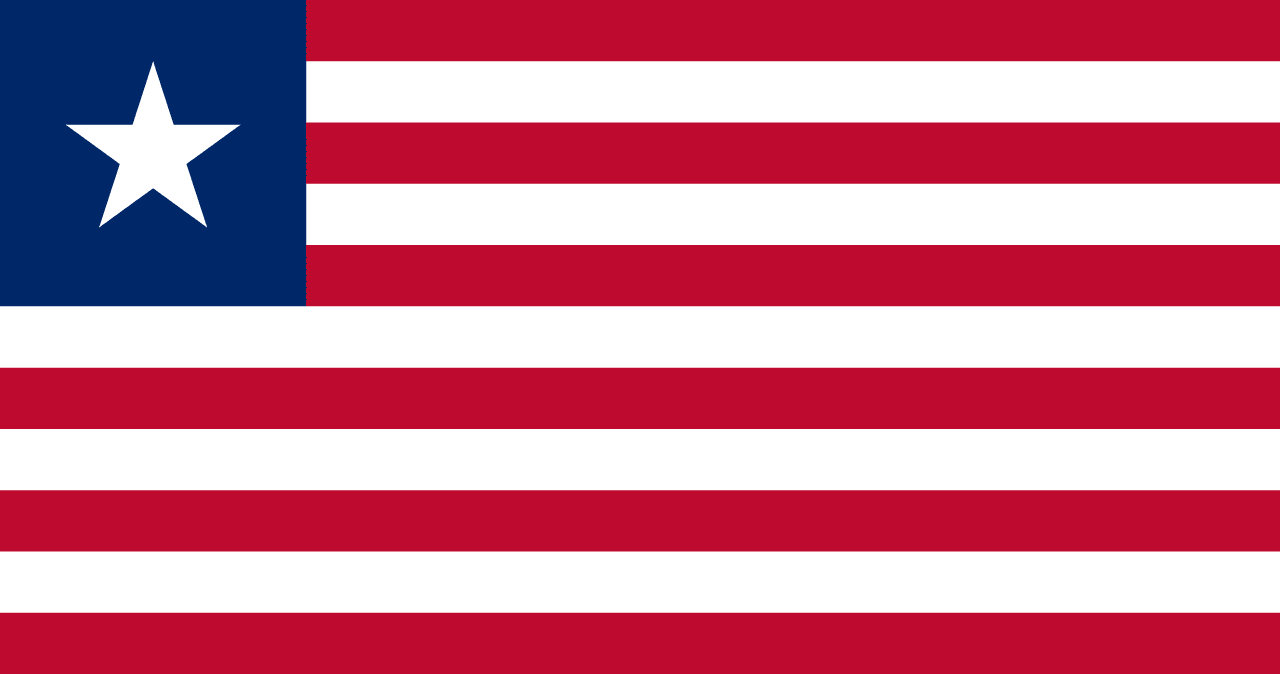
Liberia
Africa
Eleven alternating red and white stripes with a blue canton containing a single white five-pointed star, representing Africa's first republic founded by freed American slaves and its role as a beacon of freedom on the continent.